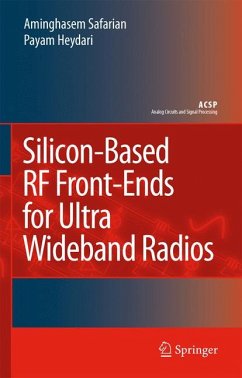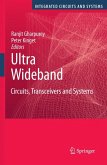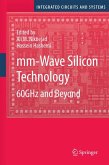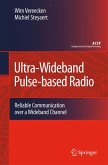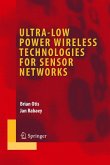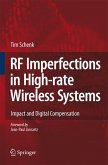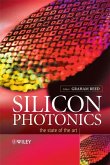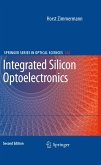Distributed integrated circuits provide intrinsic wideband characteristics, which makes them potential candidate for use in UWB transceivers. Recent advances in high-speed IC design with continuous scaling of minimum feature sizes of silicon technologies have renewed the interest in distributed circuits using on-chip transmission lines.
Silicon-Based RF Front-Ends for UWB Radios comprehensively studies silicon-based distributed architectures in wideband circuits.
The book begins with an introduction of several transceiver architectures for UWB. The discussion then focuses on RF front-end of the UWB radio. First, the design and analysis of a performance-optimized CMOS distributed LNA is presented. This is followed by design of novel distributed RF front-ends for UWB IF-receivers (UWB-DRF). The book continues with the introduction of a novel distributed direct conversion RF front-end (DDC-RF). The DDC-RF power and area-efficiently combines the wideband distributed approach with IQ requirement of a direct conversion receiver. Furthermore, deploying merged LNA/mixer enables low-power design, while achieving superior linearity over the conventional distributed amplifiers. The baseband output signals are zero/ low-IF, hence the output transmission lines in conventional distributed circuits are omitted, resulting in less area of the DDC-RF.
To increase data rate and to achieve immunity to multi-path fading, UWB systems employs multi-antenna configuration at receiver/transmitter. Innovative wideband variable delay and gain stages are then introduced to receive and transmit in desired direction. Finally, experimental results of the fabricated prototypes are presented.
Silicon-Based RF Front-Ends for UWB Radios will be of interest to RF circuit designers and students.
Dieser Download kann aus rechtlichen Gründen nur mit Rechnungsadresse in A, B, BG, CY, CZ, D, DK, EW, E, FIN, F, GR, HR, H, IRL, I, LT, L, LR, M, NL, PL, P, R, S, SLO, SK ausgeliefert werden.

